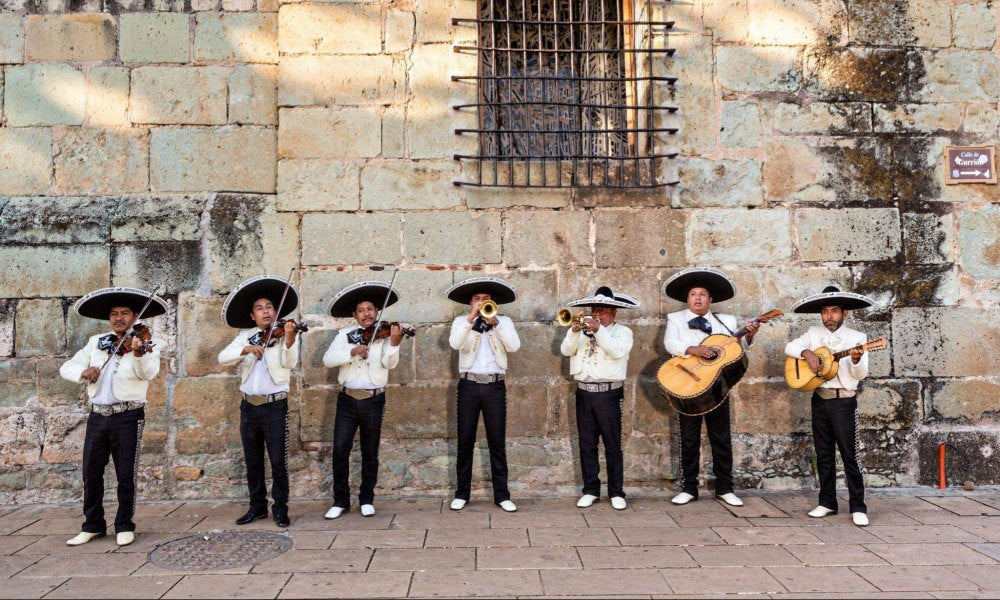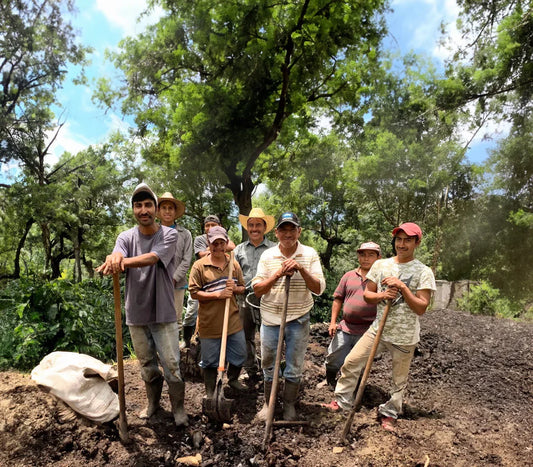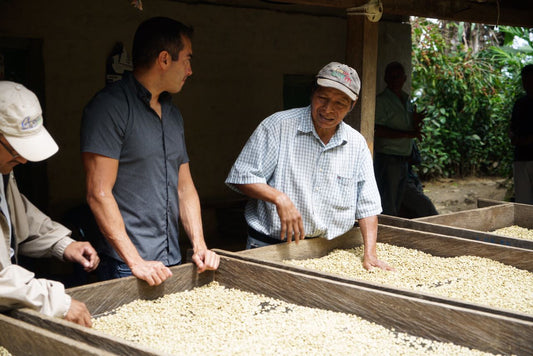
Music to My Ears: The Origins of Mariachi in Mexico
Characterized by a distinctive grito, mariachi is the ultimate melodic expression of heartache and happiness.
Some call it a musical genre, others call it an emotional expression. Whatever the definition, one thing that cannot be denied is the immense popularity and influence of mariachi.
Jump to:
What Is Mariachi?
Characterized by its soulful blending of harmony, melody, and rhythm, mariachi and, more specifically, mariachi bands, are considered a national symbol of Mexico.
The band members’ charro suits and distinctive gritos (cries) have formed the entire country’s musical backdrop for more than two centuries, during which time they have weaved their way into the nation’s collective conscience.
In 2011, mariachi was officially accepted as a symbol of Mexican culture when it received international recognition from UNESCO as an intangible cultural heritage of humanity. This accolade means that mariachi performances are now a protected aspect of Mexican culture, ensuring it will be passed down and be enjoyed for generations to come.
But anyone in Mexico will tell you: it didn’t need official recognition to make sure it would live on. Mariachi music is an immovable symbol of Mexican culture and heritage, which serves as an infinite source of pride for Mexican people around the world.
“We are very emotional people,” explains Ezekiel Castro, a former director emeritus of the Mariachi Programs at the Butler School of Music. “When we hear mariachi music, whether it's due to sorrow or joy, we can’t help but let out a grito.”
How Did Mariachi Music Begin?
Unsurprisingly, the origin of mariachi music is a much debated topic. However, most agree that it was born out of three different groups that can be traced back to 18th-century Jalisco.
The style of music was originally performed by rural, working-class musicians who blended Spanish, African, and Mexican influences. The sounds, instruments and subject matters would vary from region to region, but the vibe was always uplifting, representative of the rural fiestas where it was originally performed. Over time, its infectious sound spread throughout all classes. And from there, people began to perform it professionally.
Today, the instruments most typically used in mariachi music include the guitar, vihuela, guitarrón, trumpet, and jarana. And the charro costumes worn by the musicians – complete with straw hats and botonaduras – still reflect the music’s humble origins.
For many in Mexico, as in the case of my family’s parties when I was young, mariachi is a common part of life. It provides the soundtrack for everything from weddings to birthdays to quinceañeras, giving people a special way to remember the moment and enjoy themselves.

Mariachi and Politics
And it doesn’t stop there. Mariachi is deeply embedded in the country’s politics, too. In fact, it was largely down to politics that the music’s popularity surged in the 20th century. This was especially true after the Mexican Revolution, which saw a renewed interest in traditional Mexican culture and a desire to promote a sense of national identity.
President Lázaro Cárdenas del Río also played a key role. Recognizing the importance of mariachi music as a symbol of traditional Mexican culture, he established the National Conservatory of Music in Mexico City, which included mariachi music as one of the subjects in the curriculum.
This helped to ensure that the next generation of musicians would be trained in the traditional techniques of mariachi music.
Cárdenas also established the Mexican Folkloric Ballet, which was a government-funded ensemble that performed traditional Mexican music, dance and songs, including mariachi music, at national and international events.
By promoting mariachi music through this ensemble and other cultural initiatives, Cárdenas helped to revive the popularity of the music and ensure its survival for future generations.
How to Perform a Mariachi “Grito”
Mariachi has come to represent our joys, struggles, and growth. In fact, now, over any given weekend, you can easily find about 4,000 mariachi bands performing in Mexico City alone.
Its popularity has also spread to the US, where it can be heard entertaining diners at restaurants and bars everywhere from LA to Miami.
However, although mariachi is an incredibly popular genre (made even more so by telenovelas) and can be studied at many schools and other learning institutions across the US, there is one thing some continue to struggle with: the distinctive mariachi yell known as the grito.
“Some people perform it exquisitely,” Ezekiel says. “Others, you know, we just do the best we can. He adds that his students are already much better at it than he is. "Everybody has their own individual way of doing gritos. It's a great form of expression."
To properly perform a grito, you must use the front of the diaphragm, full of gusto, and release anguish and joy from your soul. As you do this, it’s important not to feel embarrassed or self-conscious. A true grito involves giving it your all.
Deeply rooted within us all, mariachi is part of our cultural identity, and provides a form of entertainment for all age groups. That said, Mexican journalist Felix Contreras explains that he definitely listens to it more now that he’s older.
“It’s an acquired taste as you get older, you experience life’s heartbreaks and joys, the lyrics and the recitations and the performance resonate in a different way. It has all the secrets to life in the lyrics. You don’t know that when you’re in your twenties."
Overall, mariachi music is an essential part of the cultural fabric of Mexico and Mexican-American communities. The skill and artistry required to perform it continue to be highly regarded, with their immense power to conjure up memories, emotions, and provide a soundtrack for life’s most important milestones.


